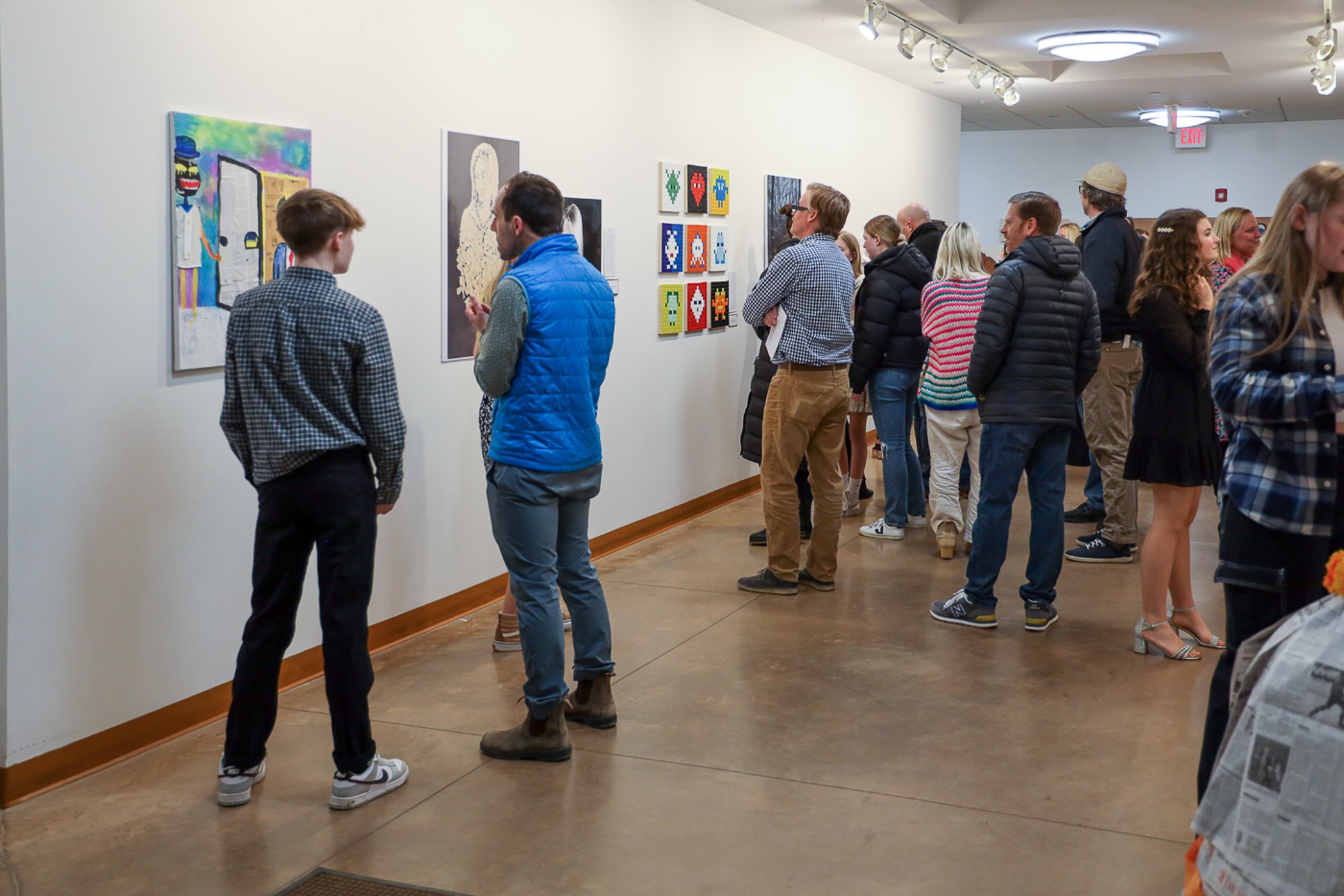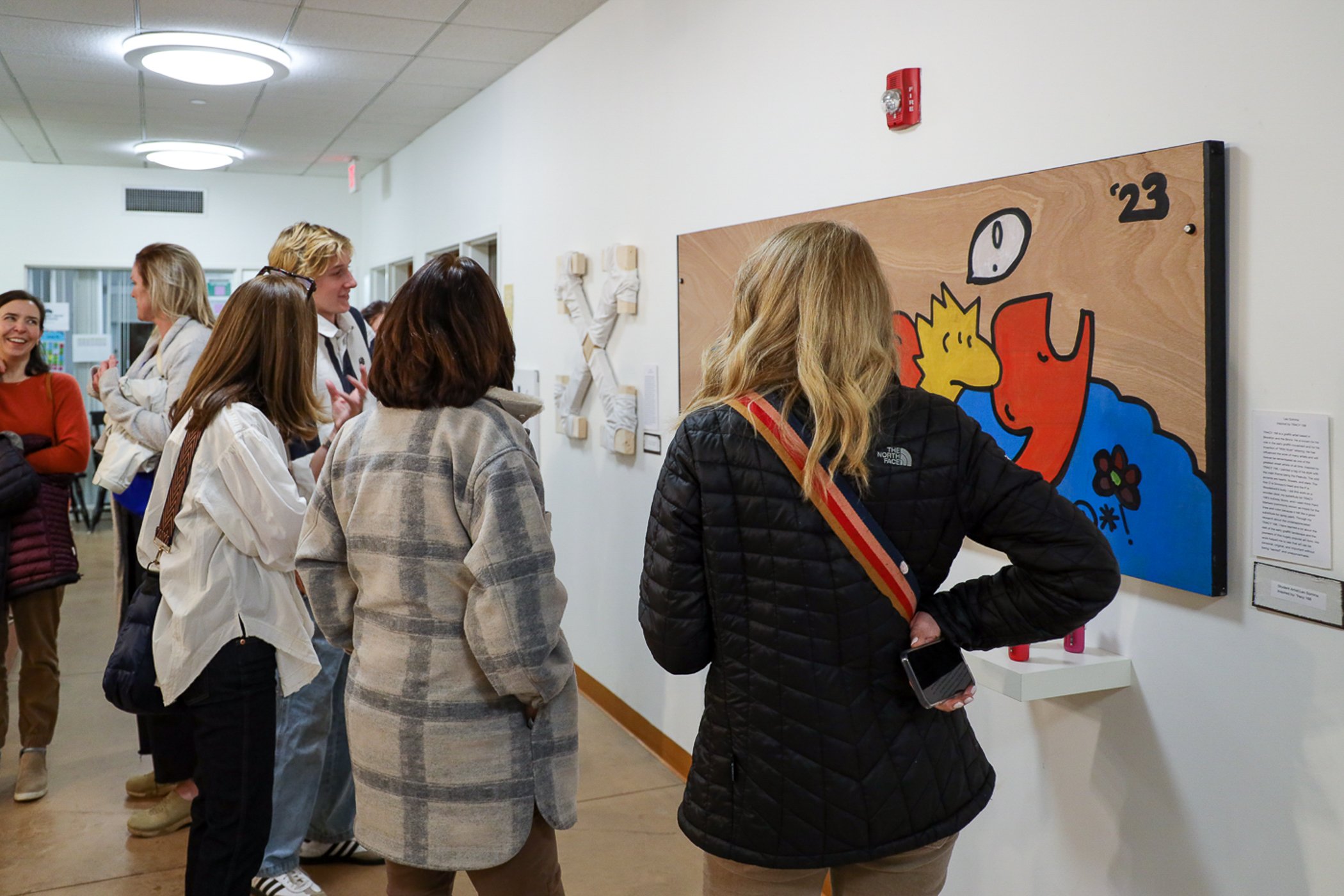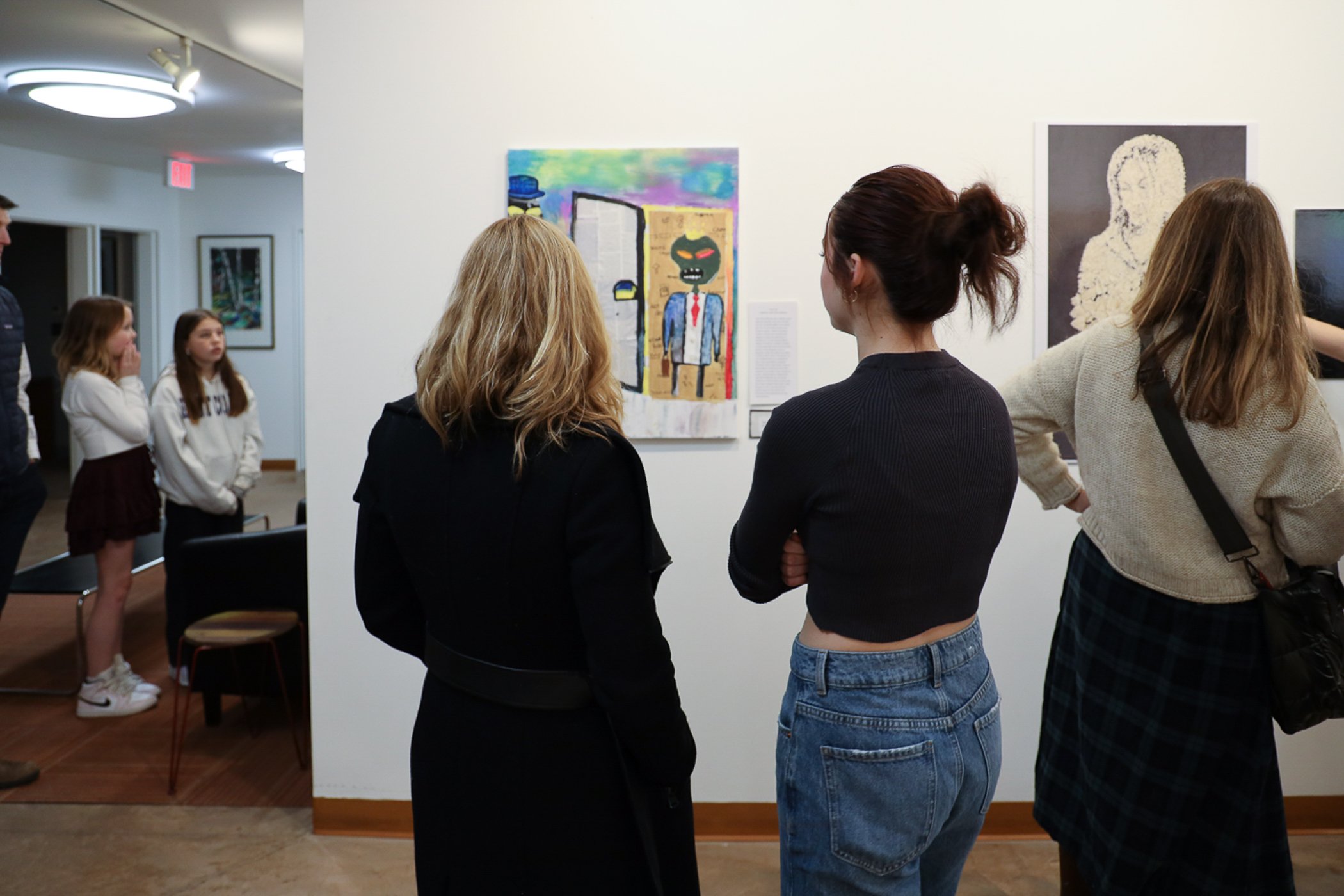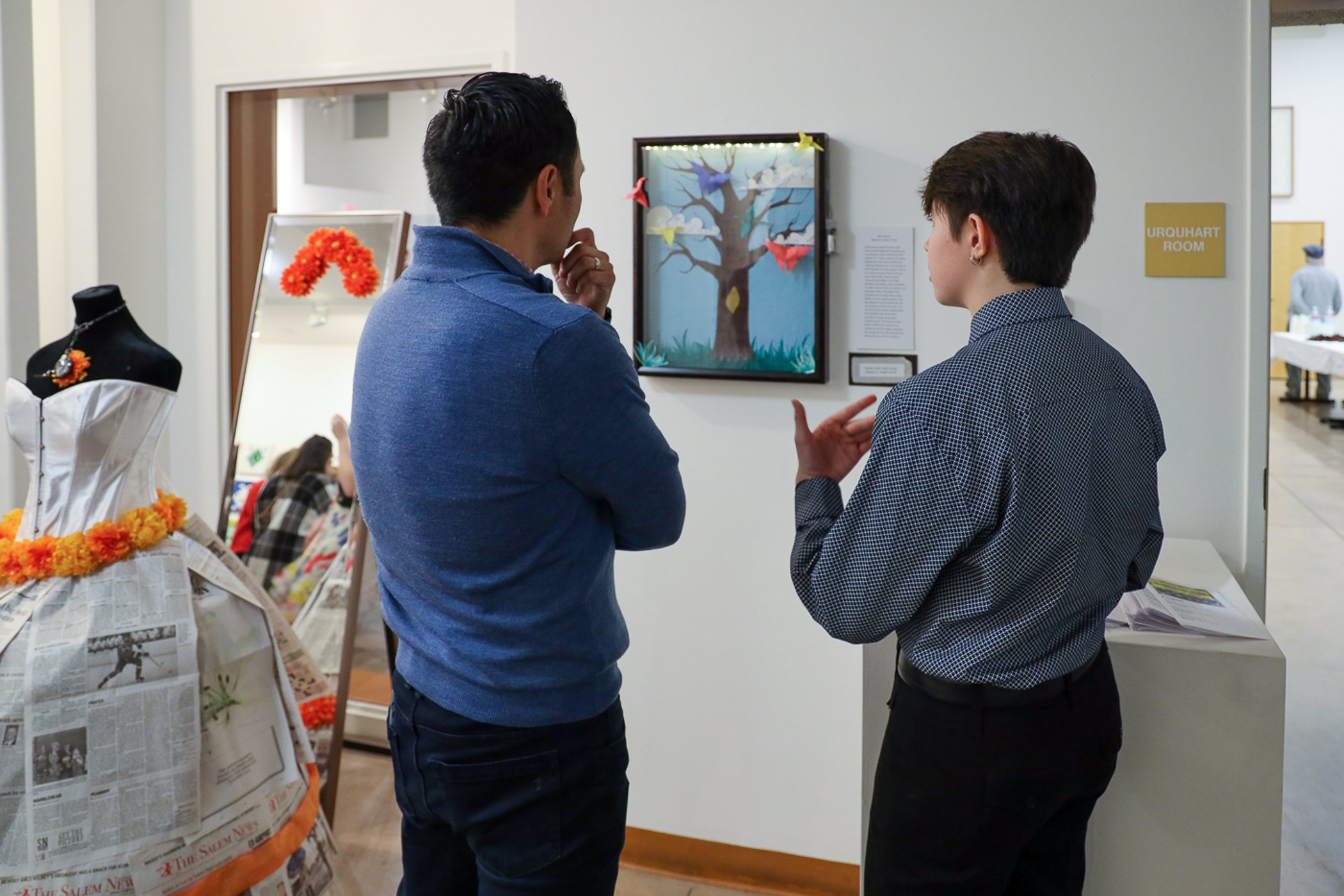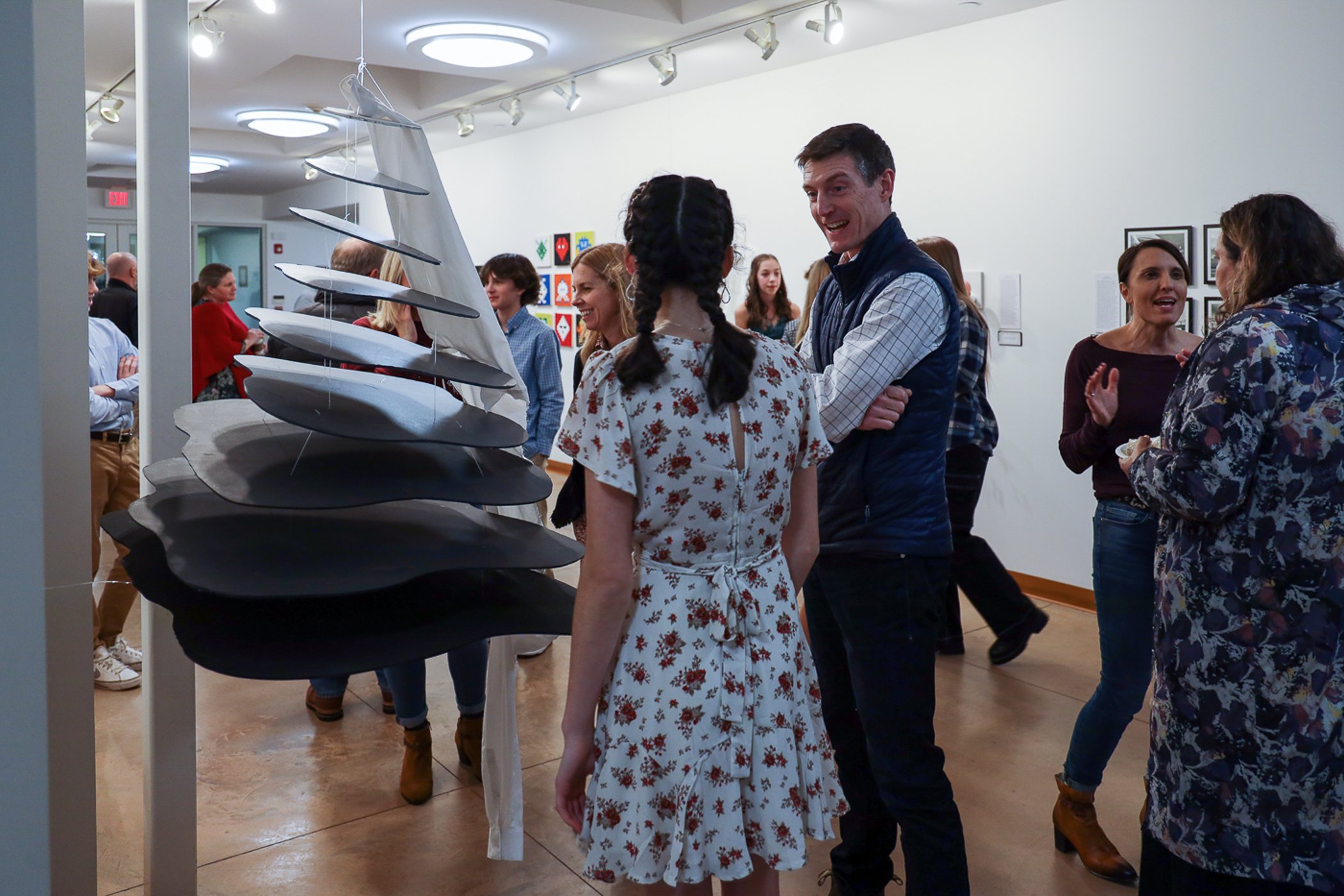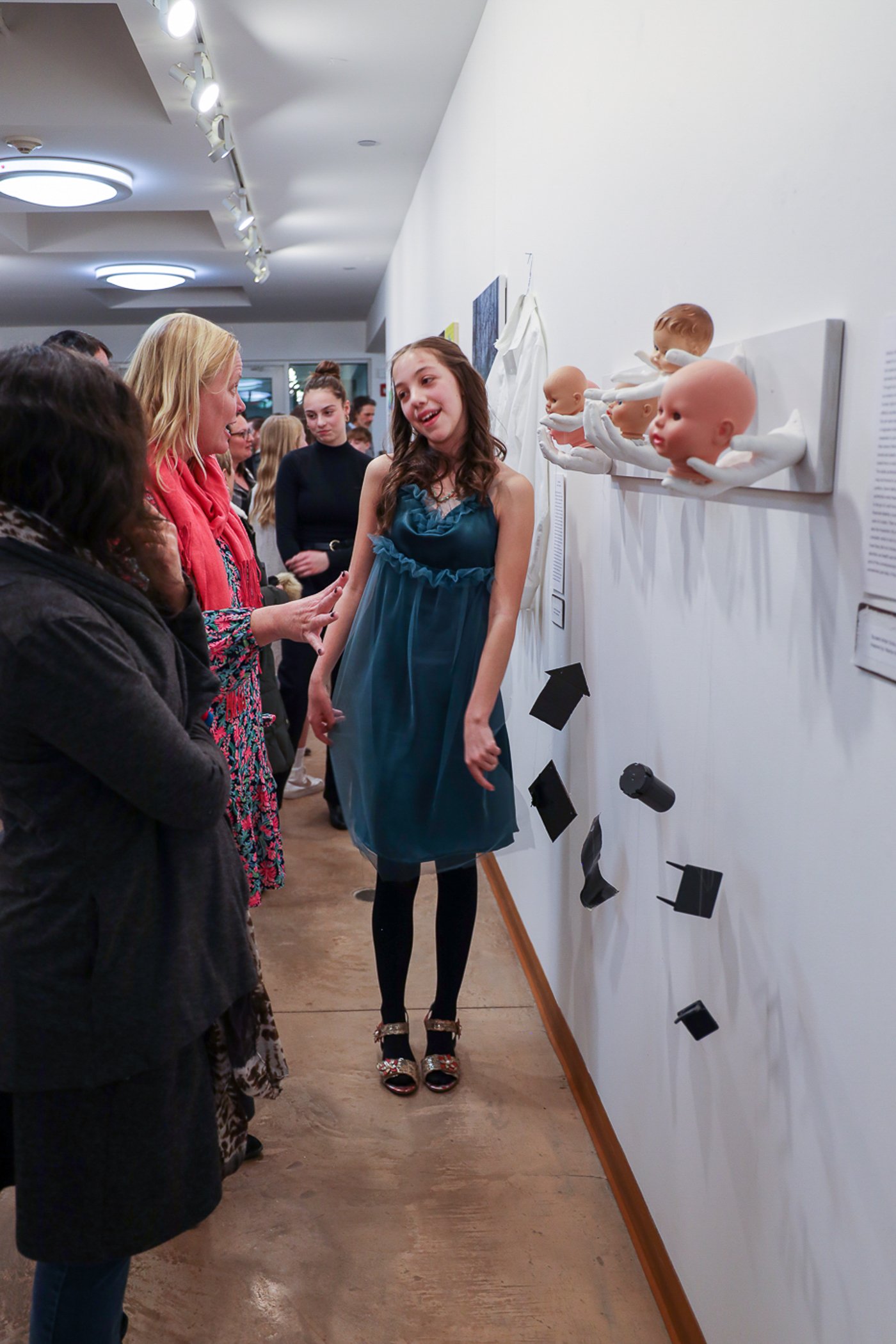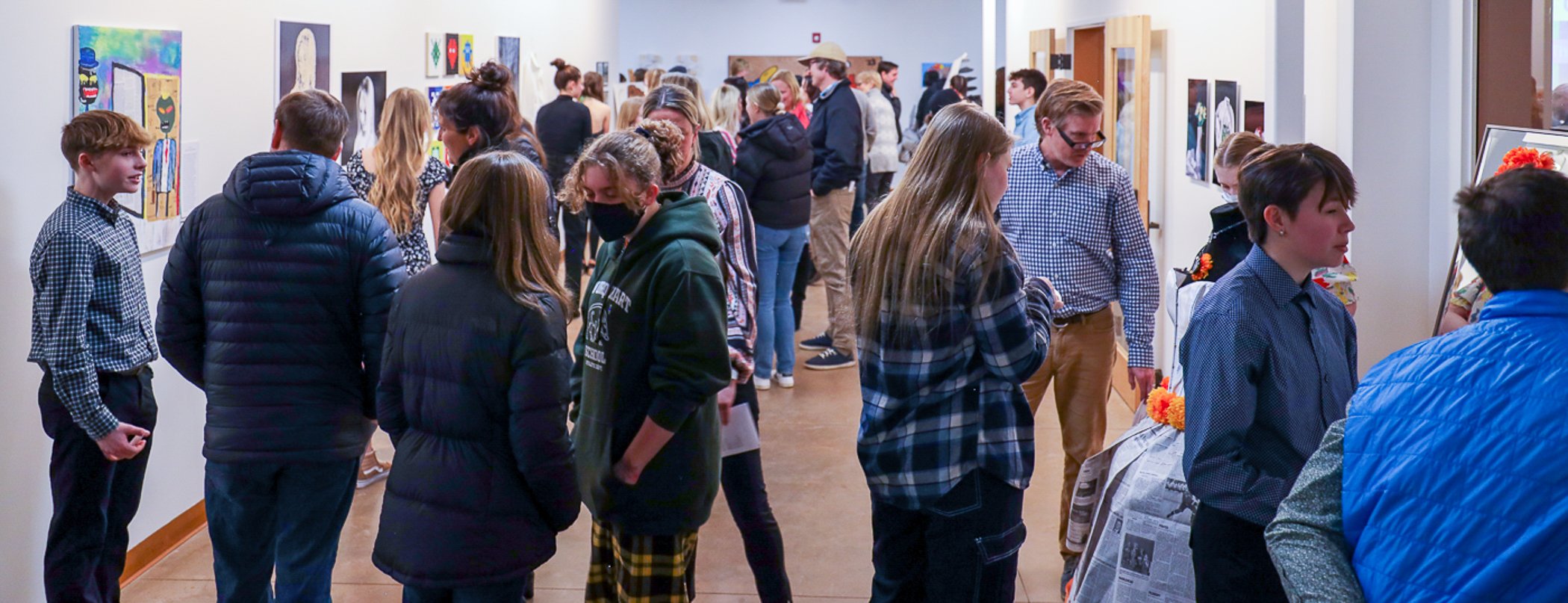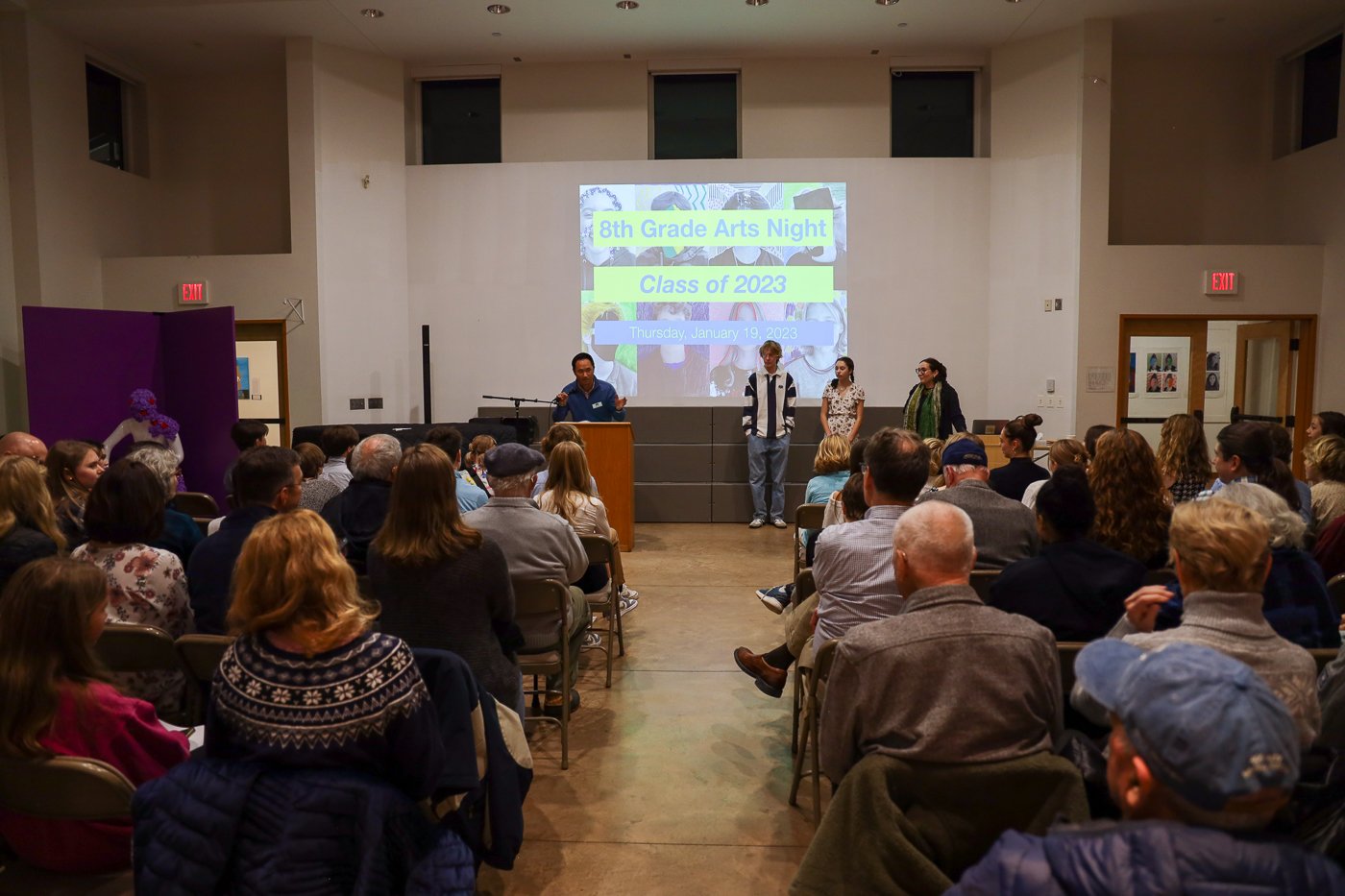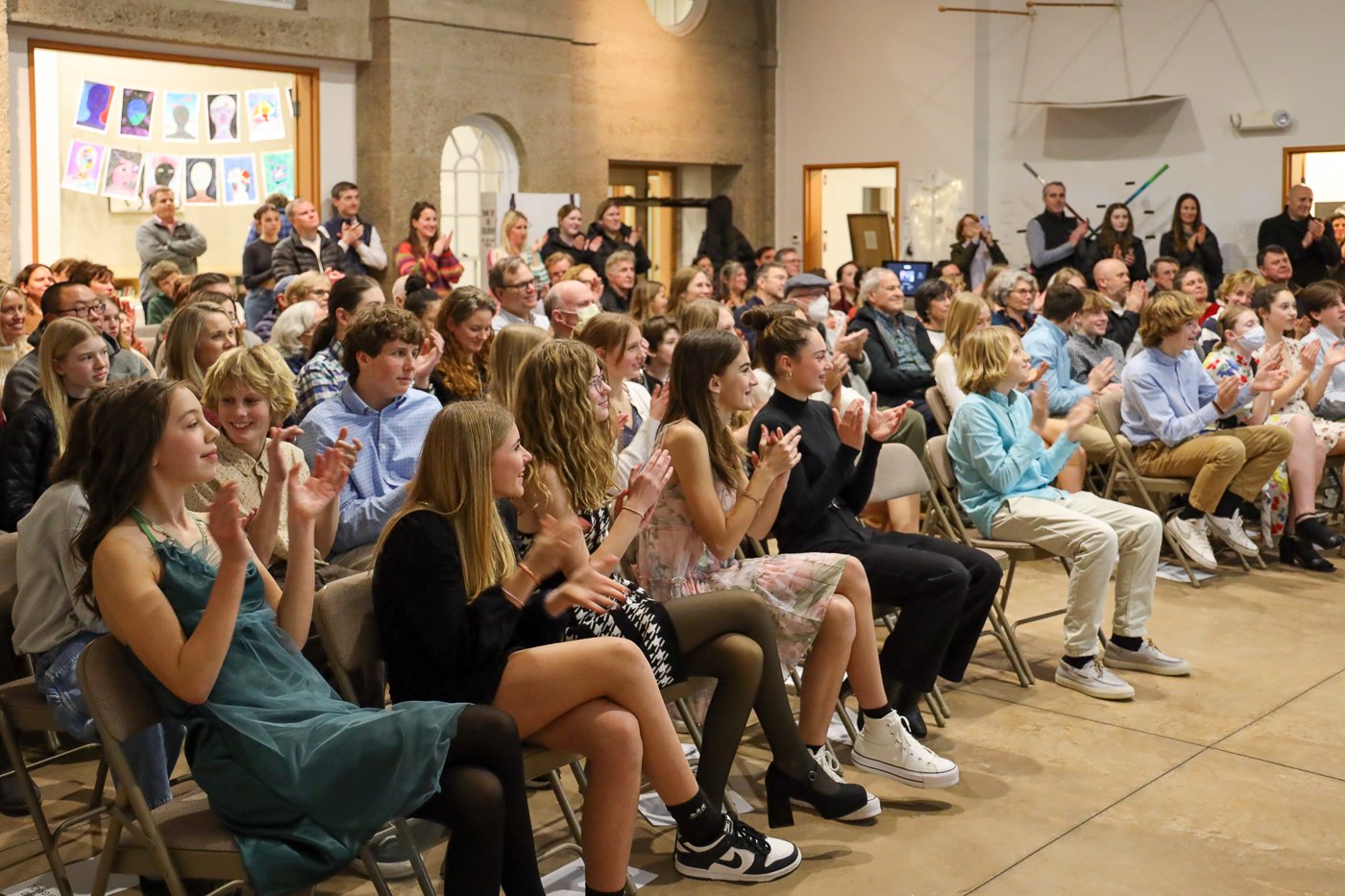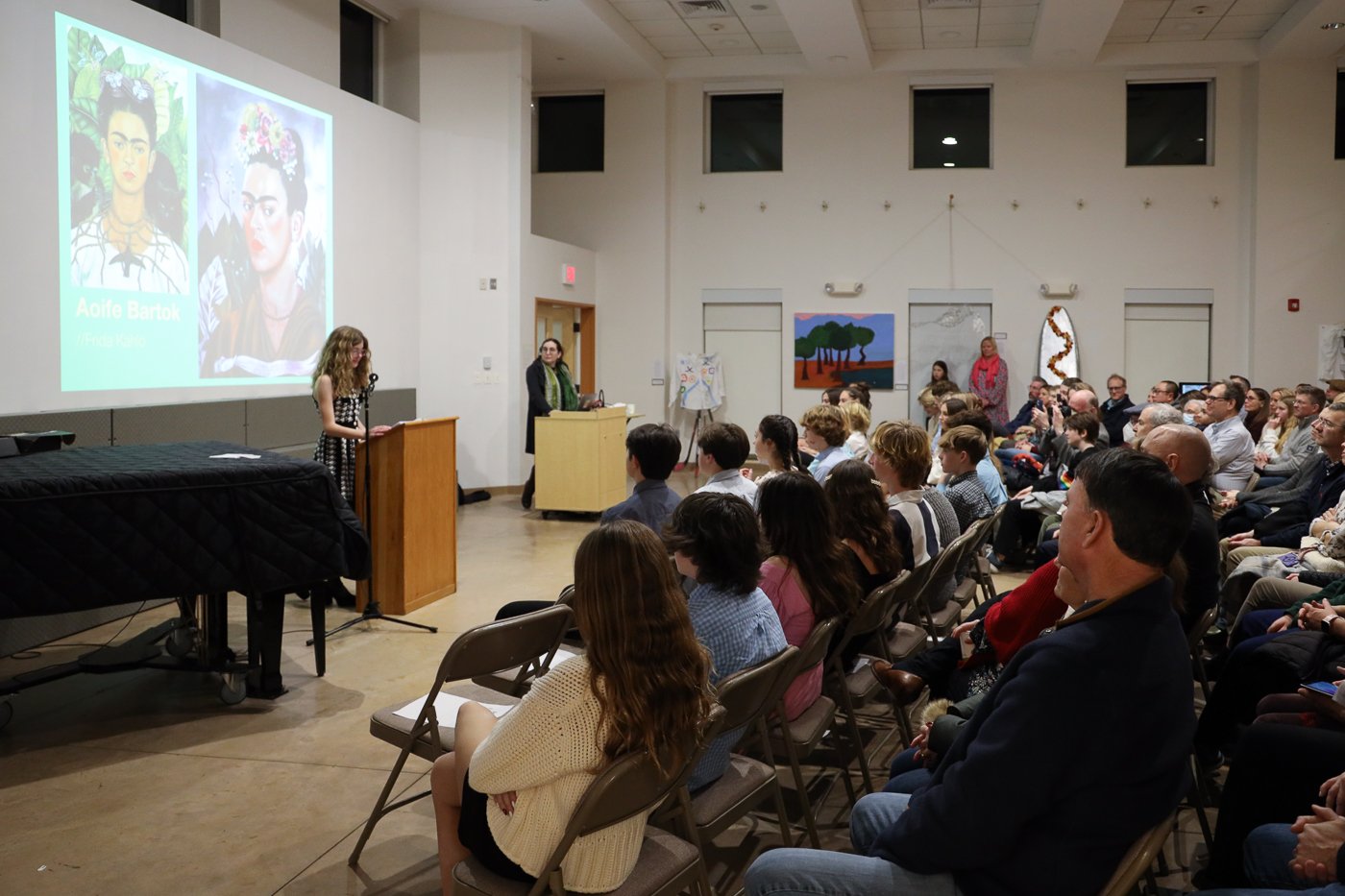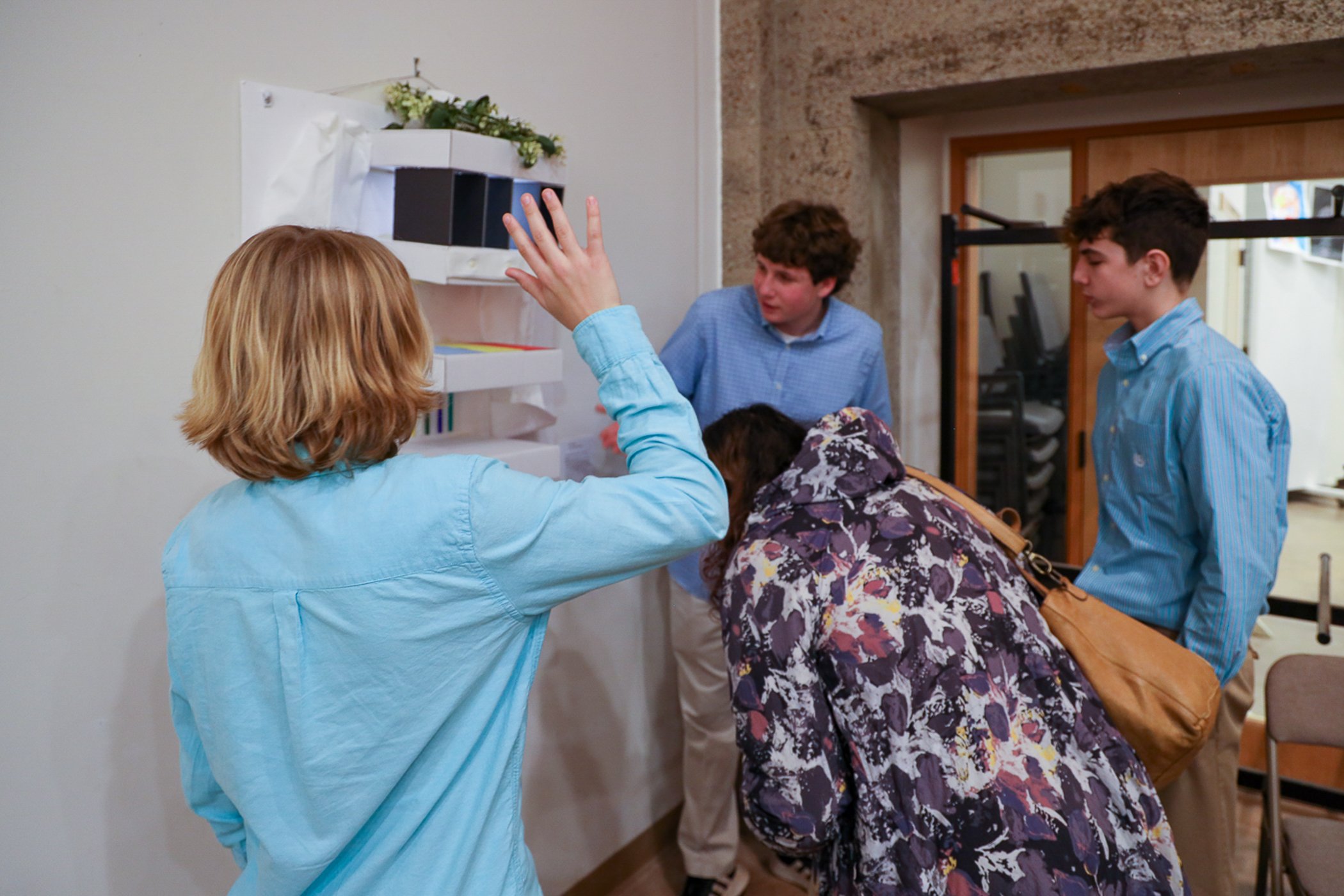8th Grade Arts Night 2023
For 27 years now, students at GUS have participated in something called the White Shirt Project, created by art teacher Dawn Southworth. She was inspired by her own background as an exhibiting artist to generate a group show centered around a common object, and she settled upon the white shirt as a unifying element, asking students to choose a contemporary artist to research, write about, and make an original work of art reflecting both the artist’s influence and their own life. What began in the lower school building all those years ago as a small exhibition has now grown into Arts Night, a community celebration of work installed along the gallery-like walls of the Upper School and Nance Room. It is an integral part of the 8th grade experience, a capstone project of sorts, and includes food, conversation, artist talks, and choreographed dance performances in Braemar as well.
As a relative newcomer to GUS, it was exciting to see in real life something that initially drew me to the school. While interviewing, I researched, much like the 8th grade students researched their artists, by going to the website, reading about the curriculum, watching videos posted by the school, and asking questions. One of the elements of 8th grade life that intrigued me the most was the White Shirt Project. What a cool opportunity for students to become more culturally literate while also thinking about themselves, who they are, where they are, and where they are going, core themes of GUS life. I spent three days in New York City with students earlier this year, wandering MoMA and seeing their excitement (is that the REAL Starry Night?!), which only heightened my enthusiasm for where they would take this object, the white shirt, and their research.
As I watched them plan, explore, make decisions, scrap decisions, make new choices, change direction based on what they learned or the behavior of materials or the process of making the art itself, I developed a profound respect for each of them, came to see different elements of their personalities and identities not only as students and humans but also as artists. When the projects arrived, my high expectations for what their work would be were surpassed in spades, and seeing their films, sculptures, photographs, paintings, and installations, I was moved by the way one similar object, a white shirt, brought out such a range of visions based on their particular curiosities, interests, talents, and grit as individuals.
The White Shirt Project is a rite of passage, a marker of the students’ time at GUS, and it also marks the start of their procession towards graduation. But to me, it is an expression of what a progressive and student-centered curriculum can do for the individual child, of the ways a spiraling curriculum builds upon itself. Every year, students take art classes, consider the essential questions and themes mentioned above, watch art being installed along the hallways and then right after winter break, the White Shirt Projects appear. Younger students visit with the 8th grade to ask them questions, look at their work. They hear stories from older students or their siblings about the process and wonder what will I do for my project once I reach 8th grade? Reading this year’s artist statements and talks, I learned how they find inspiration from museums they visit both inside and outside of school, art that exists in their own lives, their perceptions of student projects of years past, and lessons from school that shaped what they wanted to do. Humanities class was taken over by conversations about influence, about possibilities, about a broad range of ideas as they settled on their artists and projects over the fall. Next, they researched and read sample profiles from The New Yorker, The New York Times, Texas Monthly. They consulted each other. They questioned their teachers and parents. One student even worked with her neighbor, a photographer, in the studio. We decided upon a format for their papers: an opening story, a brief biography, an overview of the artist’s work and influence, a concluding paragraph outlining the impact on the students and their projects. In December, they wrote their papers, and then over winter break, they made the artwork, which was brought to school and installed by their parents and Ms. Southworth. They wrote artist talks and artist statements, doing their best to express their ideas with their own individual voices. They gave a gallery talk to the second grade. They went to look at the fourth grade lighthouses and in return, the fourth grade saw their work. They answered a lot of questions. Rehearsed and rehearsed and rehearsed until at last, Arts Night arrived and the community came together to celebrate them. The audience left not only better educated about the artists who inspired these 8th grade students, but also about each 8th grader and these students’ interest in filmmaking, skiing, skateboarding, hockey, fashion, abstraction, photography, poetry, social justice, the environment, their families, and more.
The White Shirt Project and Arts Night would not be possible without a whole village of people involved, and as I reflect back upon the evening, upon the previous months leading up to it, I am filled with gratitude for everyone who came together to make such a very GUS event possible: teachers, administrators, staff, students, parents, and even neighbors. The White Shirt Project manifests the GUS curriculum, the themes and community life we hold so dear, and I am looking forward to what these 8th graders will do next, to their upcoming world and U.S. maps, to their “This I Believe” speeches and ceramic tiles, as well as to what the current 7th graders will make next year. What are future 8th graders thinking about as they wander the halls each day amidst so much creativity and inspiration? I cannot wait to find out.

